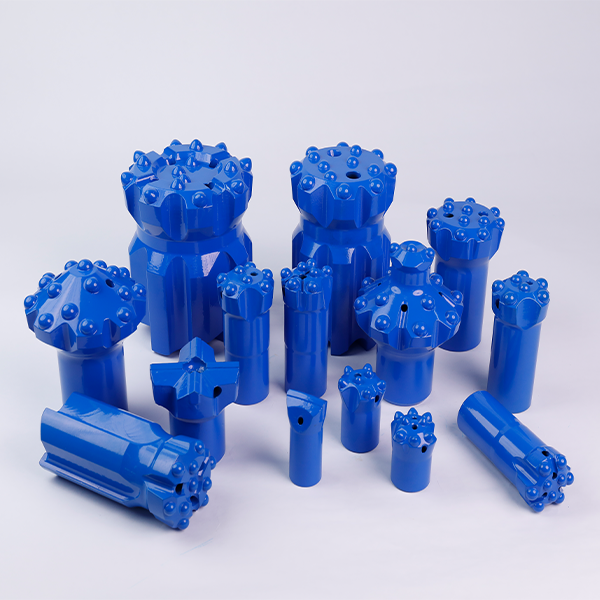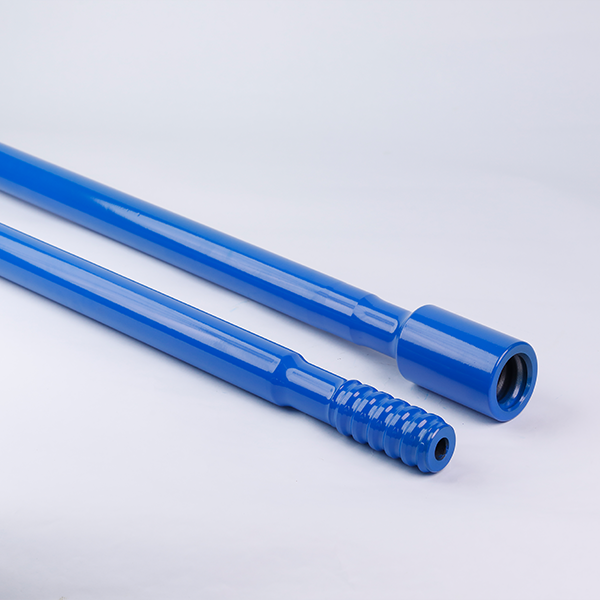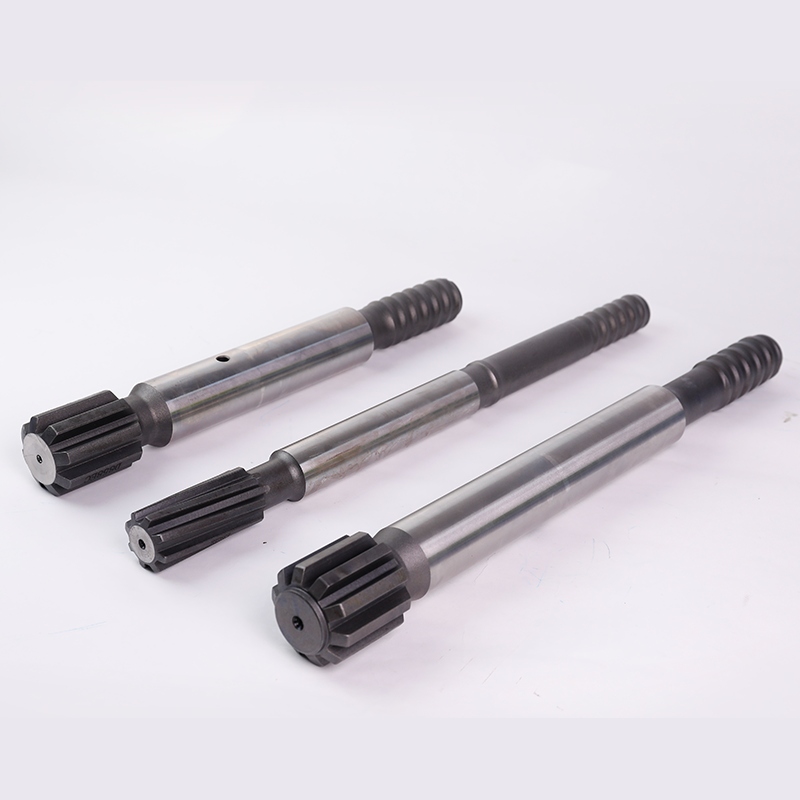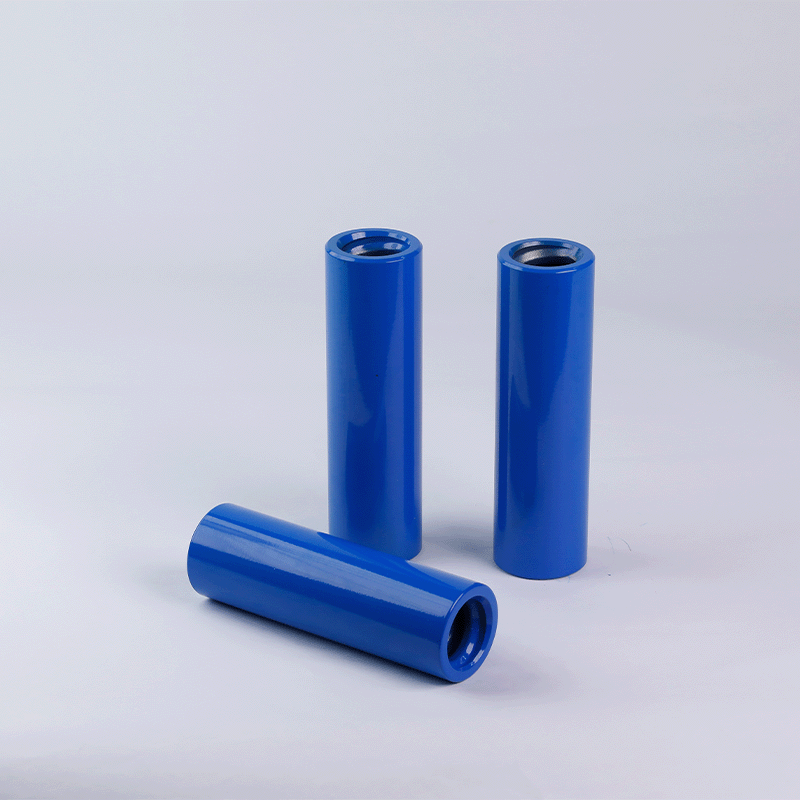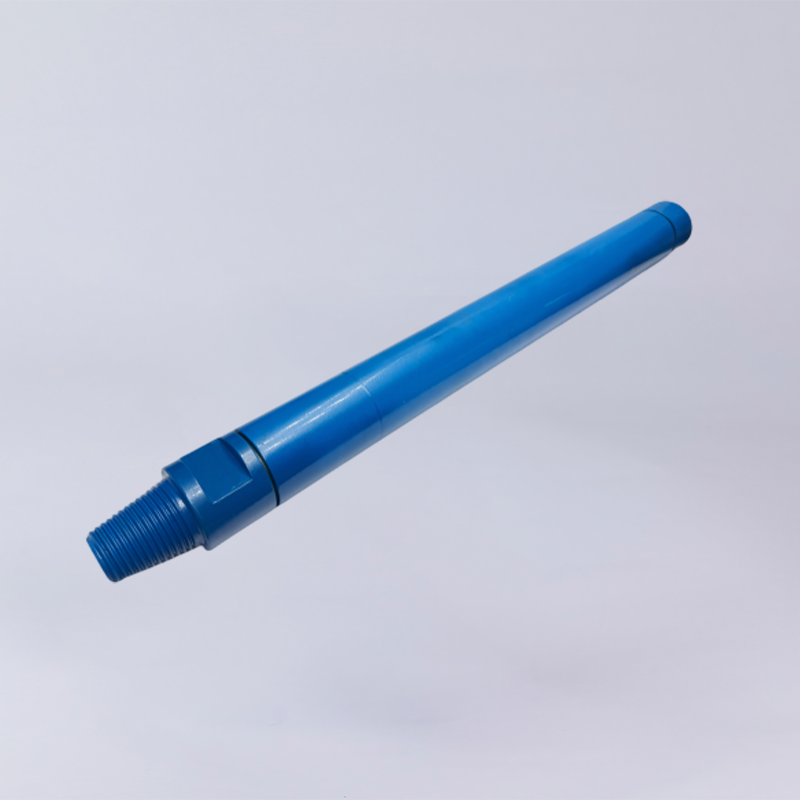As a new generation of rock drilling tools in fields such as mining and tunneling construction, DTH hammers have solved engineering problems that cannot be addressed by rotary drilling and percussion drilling. However, due to their complex and diverse engineering environments, DTH hammers may still encounter some problems during drilling. This article will conduct an in-depth analysis of some common issues and propose corresponding solutions for the reference of industry professionals.
1. Sand Gushing
At the initial stage of drilling construction, some construction teams mix different hole-opening methods during operations. When encountering hard rock, they often overlook the crucial step of slurry pumping. Meanwhile, due to the lack of necessary piston equipment on-site, it is difficult to discharge impurities such as mud effectively. During the casing-lowering process, the drilling rig withdraws from the hole position too early, resulting in non-vertical drilling holes. In addition, the lack of centralizers during casing-lowering further compounds the problem. The combined effects of these factors eventually lead to casing deformation, severely uneven thickness of the filter layer annulus, and damage to the filter screen under such unfavorable conditions, thus triggering frequent sand gushing. Sand gushing not only affects the stability of the drilled hole but may also cause the collapse of the hole wall, endangering construction safety and project quality.
Countermeasures
- Standardize the hole-opening process: Before construction, select an appropriate hole-opening method according to the geological conditions. When encountering hard rock, strictly follow the operating procedures for slurry pumping to ensure the timely removal of impurities in the hole.
- Equip necessary equipment: Provide well-performing piston equipment at the construction site to improve the discharge efficiency of impurities such as mud. Use centralizers during casing-lowering to ensure the vertical lowering of the casing and uniform thickness of the filter layer annulus.
- Strengthen construction management: Establish strict construction regulations to clearly define the appropriate time for the drilling rig to withdraw from the hole position and avoid premature withdrawal that may cause hole deformation. Assign a dedicated supervisor during the construction process to ensure that each step complies with the standards.
2. Drill-sticking
The occurrence of drill-sticking is due to the incorrect perception of construction workers. During construction, they neglect the timely and necessary well-washing of the aquifer and fail to perform key operations such as mud replacement. As a result, during the drilling process of the DTH hammer, in some areas, the accumulation of mud and other impurities and the instability of the hole wall can easily lead to serious problems such as drill-sticking, which has a significant impact on the construction progress and project quality. Once drill-sticking occurs, it not only delays the construction schedule but may also damage the drilling tools, increasing construction costs.
Countermeasures
- Strengthen personnel training: Regularly organize professional training for construction workers to raise their awareness of the importance of well-washing and enable them to master the correct well-washing and mud replacement operation methods. The training content should include well-washing standards and procedures under different geological conditions.
- Monitor mud properties in real-time: During the drilling process, use professional mud testing equipment to monitor performance indicators such as the density and viscosity of the mud in real-time. Once the mud properties are found to be sub-standard, adjust or replace the mud immediately.
3. Sedimentation
Since the construction team failed to clean the mud wall protection of the aquifer, with the continuous passage of time and the impact of long-term - standard construction, a large amount of mud and other impurities cannot be discharged out of the hole and gradually accumulate at the bottom of the hole and in the filter layer. These sediments can prevent the drilling depth from reaching the design requirements, posing many potential hazards for subsequent drilling operations and increasing construction difficulty and risk.
Countermeasures
- Thoroughly clean the mud wall protection: During construction, strictly follow the construction specifications to clean the mud wall protection of the aquifer. The circulating flushing method can be adopted, using high-pressure water flow to carry out the mud and impurities in the hole.
- Optimize the slag-discharging system: Improve the slag-discharging equipment and technology to enhance the slag-discharging efficiency.
Regularly clean the bottom of the hole and the filter layer: Develop a regular cleaning plan and clean the bottom of the hole and the filter layer at appropriate times during the drilling process.
4. Pump-sticking
During the drilling process of the DTH hammer, large-volume cavities may form due to rock fragmentation. At this time, large rock collapses are likely to occur, which can break or crush the casing. When the casing is severely damaged, the water pump cannot be lifted, resulting in the pump sticking. Additionally, compared with the roller cone drill, the DTH hammer produces relatively rough hole walls. During the subsequent installation of equipment, this can lead to short-circuited or missing pumps, indirectly increasing the probability of pump-sticking. Pump-sticking can prevent the normal progress of drilling operations and seriously affect the construction progress.
Countermeasures
- Strengthen geological exploration: Before construction, conduct a detailed geological exploration of the construction area to understand the properties and distribution of rocks, and predict in advance areas prone to rock fragmentation and collapse. Develop corresponding construction plans and preventive measures based on the exploration results.
- Improve hole-wall treatment technology: To address the rough hole walls produced by the DTH hammer, hole-wall trimming equipment can be used during the drilling process to polish and trim the hole walls to make them smoother. In addition, inspect and clean the hole walls before installing equipment to ensure smooth equipment installation.
5. Hole Collapse
When the DTH hammer drills through loose sediments, fault fracture zones, or weathered rock layers, due to the weak stability of these formations, the hole walls lack sufficient support after the hole is formed and are prone to collapse. Moreover, the DTH hammer uses the "percussion + rotation" drilling method. When the rock drill bit impacts the rock at high speed, it generates significant vibrations, which may exacerbate the fragmentation and loosening of the rock mass around the hole wall.
Countermeasures
- Support the hole wall promptly: Once signs of rock collapse are detected during the drilling process, immediately stop drilling and use appropriate support materials to reinforce the hole wall. Methods such as steel casing and cement slurry wall protection can be used to enhance the stability of the hole wall.
- Optimize the drilling process: In loose formations or fractured rock layers, reduce the drilling speed to mitigate the impact force of the rock drill bit on the hole wall and minimize the fragmentation and loosening of the rock mass around the hole wall caused by excessive impact force.
6. Conclusion
With its high-efficiency rock-breaking ability, the DTH hammer plays a crucial role in fields such as mining and tunneling construction. However, complex geological conditions and omissions in the construction process often lead to intractable problems such as sand gushing, drill-sticking, and hole collapse. The root causes of these problems include the neglect of key construction techniques by construction workers and the interaction between rock layer characteristics and the working mode of the equipment. In the face of these challenges, we should strengthen the training of construction workers, enhance geological exploration, and optimize the drilling process. All of this requires reliable equipment and professional technical support.
As a reliable supplier in the rock-drilling tool industry, Kelleg is always driven by technological innovation and guided by customer needs. We can not only provide DTH hammers and their supporting equipment that meet quality requirements, but also have an experienced team of professional technical engineers. Whether dealing with construction problems in complex geological conditions or solving unexpected equipment failures during operation, Kelleg can use its outstanding technical strength and comprehensive service system to ensure the smooth progress of your projects. If you are looking for efficient and reliable rock-drilling solutions, please feel free to contact us at any time. Kelleg looks forward to working with you to overcome technical challenges and facilitate the successful advancement of your projects.

